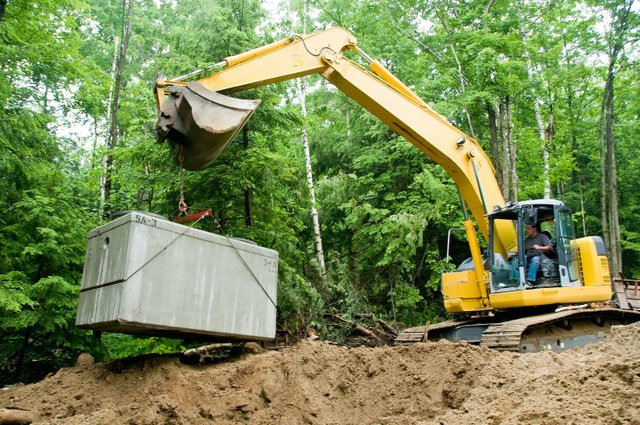Easy and Septic-Safe Way To Unclog Your Leach Field Quick!

A Septic field, also known as a septic field, is a place to receive wastewater from a septic tank. This part of the septic system consists of a network of perforated PVC drainage pipes, crushed rock, and a layer of unsaturated soil. Wastewater usually flows from the septic tank to the bottom of the wastewater by gravity.
However, a pumping station can also be used to allow wastewater to reach the leak layer when conditions do not permit the use of simple gravity. The wastewater then enters the washout layer, flows through the crushed rock, and infiltrates the receiving soil. This final stage of filtration involves bacteria and other microorganisms to further treat the wastewater before it reaches the groundwater table.
This principle of natural purification prevents contamination of groundwater. However, sometimes it gets clogged. Learn how to unclog your drains in a septic tank!
How is a septic field made? The liner plays an important role in a wastewater treatment system and if it is not working properly, the entire system will suffer. It is therefore important to avoid structural problems in the first place by ensuring that it is properly constructed.
This is why only properly licensed contractors can carry out such a project. But first and foremost, you will need to perform a percolation test and a thorough evaluation by an engineer. The percolation rate measures the time it will take for water to percolate down 1 inch in a hole that has had water poured into it so that it is completely saturated. Sandy soils have a fast percolation rate while clay soils have a slow percolation rate. For example, the color seepage rate in sandy soil might be 3 minutes while the color seepage rate in clay might be 48 minutes. Good soil should not have too high or too low infiltration rates.
If water flows an inch in less than 5 minutes down the hole, this is an indication that the outlet wastewater will seep too quickly to be properly treated. On the other hand, if the water takes more than an hour to settle, the outlet wastewater does not penetrate quickly enough and this can lead to backflow problems. The engineer will use the results of the permeability test and the layout of the various components of your property to recommend the type of system to use and how to install it.
Next steps in the construction of a septic school
With all the testing done and the construction plan in hand, it's time to start digging the trenches. The number of trenches to be dug depends on the size of the septic tank and the amount of wastewater that will be discharged into the landfill. Each track must be of equal width (approximately 34 feet). In addition, the grooves should be slightly inclined downwards. After the trenches are dug, they should be filled with crushed stone.
The gravel layer should be at least 1 to 1/2 inches thick and spread throughout the trenches. This step is important as it allows for better drainage of wastewater underneath the perforated pipes. The perforated pipes are then placed on top of the crushed rock layer. The tubes are fastened to ensure they are securely connected - enough to keep them from shifting or misaligning over time. The perforated pipes are then covered with more rubble. About 1-3 inches of crushed ice will make...
A geotextile film is then added over the crushed stones. The membrane prevents soil or dirt from sliding between the crushed stones and prevents the layer from leaking. If not already done, add a drain line connecting the septic tank to the drain pipes.
Finally, the trenches are filled with soil to level and normalize the surface of the landfill. You can then add a layer of grass over this area. And avoid planting anything else in or near this area at all costs.
How to unclog your drainage field? You should attempt to repair your leaky bed as soon as you notice a system problem. Otherwise, the problem could get worse and cause sewage overflow. These overflows are dangerous to you and to the environment. Furthermore, it is prohibited to pollute the environment and local authorities may force you to replace your septic system.
As discussed previously, the release of organic particles into the liner will promote biomass production and create an imbalance in the natural water purification system. This plus grease can sometimes form a layer of rust.
This results in an impermeable biomaterial sludge, which abnormally slows the infiltration of wastewater into the receiving soil.
The biomass is not the enemy of your sump installation, but this imbalance in microbial growth in the sludge can cause clogging of the filter field. Therefore, the accumulation of organic matter in the washed-out field must be removed and the sludge layer that clogs the field should be reduced.
There are several solutions to try to solve this problem… Click here for more info!